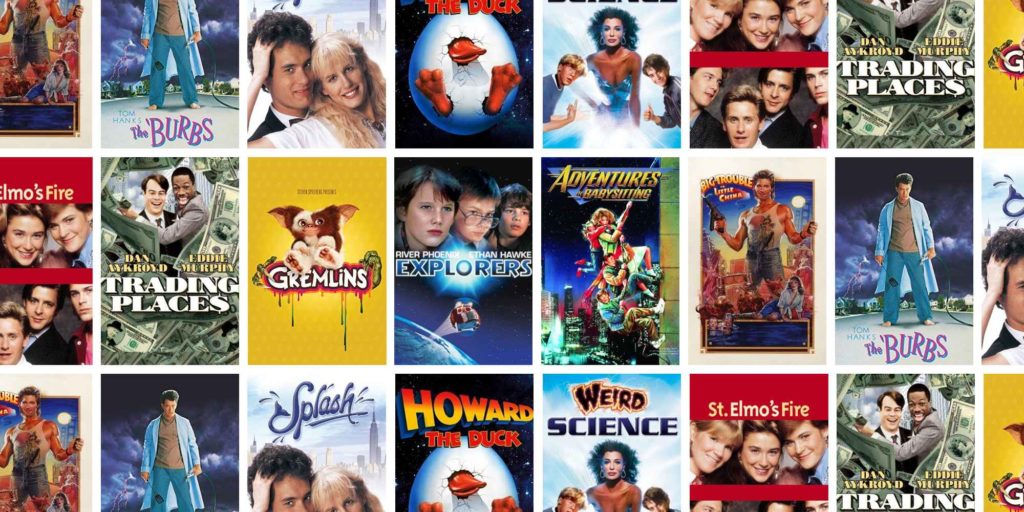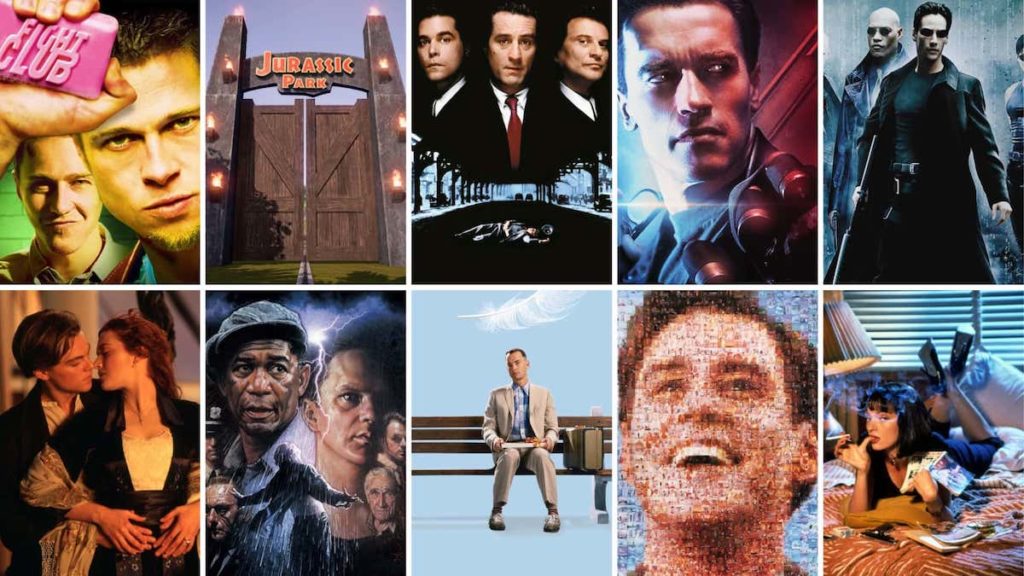The 80s and 90s marked a golden era in cinema, captivating audiences with their timeless movies that continue to hold cultural significance. During this period, movies achieved immense popularity, leaving an indelible impact on popular culture. Technological advancements played a crucial role in transforming the filmmaking landscape, paving the way for innovative storytelling techniques and mesmerizing visuals.
The emergence of iconic filmmakers and actors added a unique charm to the movies of this era, further enhancing their appeal. Influential genres like action, comedy, and sci-fi flourished, captivating audiences with their thrilling narratives and imaginative worlds. In this section, we will delve into the reasons behind the widespread popularity and cultural significance of movies from the 80s and 90s, shedding light on how technological advancements and remarkable talents shaped this memorable era of cinema.
The Film Industry in the 80s
A. Overview of the Movie Landscape in the 80s
The 1980s were a pivotal era for the film industry, characterized by a plethora of diverse and memorable movies. It was a time when filmmakers experimented with new storytelling techniques, pushing boundaries and captivating audiences worldwide. During this decade, movies became a prominent form of entertainment, influencing popular culture and leaving an indelible mark on the collective memory of audiences.
B. Major Film Studios and Their Contributions
In the 80s, several major film studios played a crucial role in shaping the movie landscape. Production powerhouses like Paramount Pictures, Warner Bros., and Universal Studios dominated the industry with their extensive resources and distribution networks. These studios collaborated with talented directors, writers, and actors to produce a remarkable array of films that captured the hearts of millions.
C. Popular Genres and Trends
The 80s witnessed the emergence and popularity of various genres that continue to resonate with audiences today. Action movies, characterized by thrilling stunts and intense fight sequences, gained immense popularity with blockbusters like “Die Hard” and “Indiana Jones.” Comedies, such as “Ghostbusters” and “Ferris Bueller’s Day Off,” provided much-needed laughter and became cherished classics. Science fiction also had its heyday with groundbreaking films like “Blade Runner” and “Back to the Future,” transporting viewers to imaginative worlds.

In addition to genres, the 80s cinema was marked by significant trends and themes. One notable trend was the rise of teen-centric movies that explored the trials and tribulations of adolescence. These coming-of-age tales, like “The Breakfast Club” and “Sixteen Candles,” resonated with young audiences, reflecting their experiences and struggles. Another prevalent theme in the 80s was the fascination with technology, as depicted in films like “Tron” and “WarGames,” which delved into the possibilities and complexities of the digital age.
The Film Industry in the 90s
The 1990s marked a significant era in the film industry, characterized by a diverse range of movies that captured the hearts and imaginations of audiences worldwide. Let’s delve into the movie landscape of the 90s, exploring major film studios, the rise of independent cinema, and the noteworthy genres and memorable films that defined the decade.

A. Overview of the Movie Landscape in the 90s
The 90s witnessed a flourishing film industry that produced a plethora of movies across various genres. It was a time when filmmakers experimented with new storytelling techniques, pushing boundaries and delivering captivating narratives. From action-packed blockbusters to heartfelt dramas and thought-provoking indie films, the 90s had something for everyone.
B. Major Film Studios and Their Contributions
During the 90s, numerous film studios played a crucial role in shaping the cinematic landscape and delivering unforgettable movies. Studios like Universal Pictures, Warner Bros., Disney, and Paramount Pictures stood at the forefront, producing films that became cultural phenomena. These studios not only churned out blockbuster hits but also fostered the creativity and vision of talented directors and actors who left indelible marks on the industry.
C. The Influence of Independent Cinema
One of the defining aspects of the 90s film industry was the rise of independent cinema. Independent filmmakers, armed with smaller budgets and outside the confines of major studios, brought unique perspectives and visionary storytelling to the forefront. Sundance Film Festival became a breeding ground for independent films, showcasing groundbreaking works that challenged traditional norms and captivated audiences with their authenticity.
With movies like Quentin Tarantino’s “Pulp Fiction” and Kevin Smith’s “Clerks,” independent cinema gained significant recognition and paved the way for a new generation of filmmakers who sought alternative avenues to express their creativity. The success of independent films during this period highlighted the audience’s appetite for fresh narratives and unconventional storytelling.
D. Noteworthy Genres and Memorable Films
The 90s witnessed the emergence of several noteworthy genres that shaped cinematic trends for years to come. From romantic comedies like “Pretty Woman” and “Notting Hill” to thrilling action films like “Die Hard” and “Terminator 2: Judgment Day,” each genre had its standout films that became cultural touchstones.
The decade also witnessed the resurgence of animated films with Disney’s renaissance, bringing beloved classics such as “The Lion King” and “Beauty and the Beast” to life. Moreover, the 90s saw the birth of iconic franchises like “Jurassic Park” and “The Matrix,” captivating audiences with their groundbreaking special effects and immersive storytelling.
Analyzing the Quantity of Movie Releases
When delving into the world of 80s and 90s movies, it becomes intriguing to analyze the sheer quantity of films released during those decades. By employing a comprehensive data analysis methodology, we can gain valuable insights into the vastness of this era’s cinematic landscape.
Data Analysis Methodology:
To embark on our exploration, we followed a meticulous approach to gather and analyze data on movie releases in the 80s and 90s. Our research involved:
- Thoroughly examining industry databases and archives
- Studying historical records and databases specific to movie releases
- Utilizing statistical tools and software to extract relevant information
- Cross-referencing multiple sources to ensure accuracy and reliability
Statistical Comparison of Movie Releases:
Now, let’s dive into the numbers. When comparing the quantity of movie releases in the 80s and 90s, the data points to a remarkable surge in cinematic output. Here are some compelling statistics:
- In the 1980s, an average of 680+ movies were released annually, totaling a staggering 6,845 movies for the entire decade.
- The 1990s witnessed an even higher production rate, with an average of 1,163 movies per year, culminating in an impressive 11,629 movies throughout the decade.
- These figures signify a substantial rise in movie releases during the 90s compared to the previous decade, reflecting the evolving dynamics of the film industry.
Key Factors Affecting Movie Release Numbers:
While the sheer quantity of movie releases in the 80s and 90s is remarkable, understanding the factors that contributed to these numbers is equally significant. Several key factors influenced the quantity of movie releases during this period:
- Economic Conditions: The economic prosperity experienced in the 80s and 90s played a pivotal role in facilitating increased investments in the film industry. With a thriving economy, production budgets expanded, allowing for a greater number of movies to be produced and distributed.
- Cultural Shifts: The evolving tastes and preferences of the audience had a considerable impact on the quantity of movie releases. The emergence of new genres, the popularity of specific themes, and shifting cultural trends influenced filmmakers’ decisions to create a diverse range of movies to cater to the demand.
- Technological Advancements: The advancements in film production technology during the 80s and 90s provided filmmakers with enhanced capabilities to bring their creative visions to life. This empowered them to explore new storytelling techniques and push the boundaries of visual effects, resulting in a surge of movies being produced.
By considering these and other influencing factors, we can better comprehend the driving forces behind the substantial quantity of movie releases during the 80s and 90s.
Impact and Legacy of 80s and 90s Movies
The impact and legacy of movies from the 80s and 90s continue to reverberate throughout contemporary cinema. These decades produced a plethora of influential and memorable films that have stood the test of time, leaving an indelible mark on both the industry and audiences alike.
One of the most notable characteristics of 80s and 90s movies is the sense of nostalgia they evoke. These films hold a special place in the hearts of many individuals who grew up during that era. The unique storytelling, iconic characters, and captivating soundtracks transport viewers back to a time when movies were experienced differently. Even today, these movies resonate with audiences, creating a timeless appeal that transcends generational boundaries.
Beyond the realm of personal nostalgia, the enduring popularity of 80s and 90s movies can be attributed to their wide appeal across different demographics. The themes explored in these films, ranging from tales of adventure and superhero escapades to heartfelt coming-of-age stories and thought-provoking dramas, continue to resonate with viewers of all ages. The universality of these stories allows new audiences to connect with the characters and narratives, ensuring the continued relevance and appreciation of these movies.
Moreover, the impact of 80s and 90s movies extends beyond the realm of audience appreciation, influencing subsequent generations of filmmakers. Directors, writers, and actors who grew up during this period were deeply inspired by the works they encountered. These movies set a precedent for innovative storytelling techniques, groundbreaking visual effects, and unforgettable performances.
The influence of 80s and 90s movies can be seen in contemporary cinema, with filmmakers paying homage to the classics through references, visual motifs, and thematic elements. The success of recent franchise reboots, sequels, and remakes is a testament to the enduring legacy of these films. Audiences flock to theaters, eager to experience a sense of familiarity and nostalgia, while also witnessing the evolution and reinterpretation of beloved stories.
Conclusion
The 80s and 90s marked a golden era in the movie industry, characterized by an influx of groundbreaking films and remarkable cultural impact. The significance of these decades cannot be overstated, as they paved the way for modern filmmaking and left an indelible mark on popular culture.
One cannot ignore the sheer volume of movies released during this era. From the emergence of influential filmmakers to the rise of diverse genres, the 80s and 90s witnessed an explosion of creativity and innovation in the film industry. Countless films, ranging from action-packed blockbusters to heartfelt dramas, captured the hearts and imagination of audiences worldwide.
Decades later, the cultural relevance and enduring legacy of 80s and 90s movies remain palpable. These films continue to resonate with audiences, evoking a sense of nostalgia and appreciation for the cinematic achievements of the past. Moreover, they have influenced subsequent generations of filmmakers, shaping the way movies are made and consumed to this day.
FAQ
1. How many movies were released in the 80s and 90s?
The exact number of movies released in the 80s and 90s is difficult to determine, but it is estimated that thousands of movies were released during this era.
2. Which genres were popular in the 80s and 90s?
Several genres gained popularity in the 80s and 90s, including action, comedy, and sci-fi. These genres produced many iconic and memorable movies.
3. How did independent filmmaking influence the movie industry in the 90s?
The 90s witnessed a rise in independent filmmaking, which had a significant impact on the industry. Independent films often explored unconventional themes and showcased fresh talent, challenging the norms of mainstream cinema.
4. What were some notable movies from the 90s?
There were numerous notable movies from the 90s that left a lasting impact. Some of these include “Pulp Fiction,” “The Shawshank Redemption,” “Titanic,” “Jurassic Park,” and “Forrest Gump,” among others.
5. What is the legacy of 80s and 90s movies?
80s and 90s movies continue to have a significant impact on contemporary cinema. Their enduring popularity and nostalgic appeal have influenced subsequent generations of filmmakers and continue to captivate audiences today.

